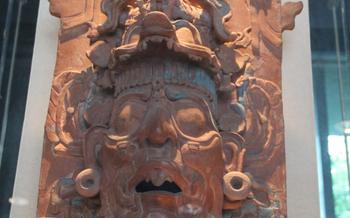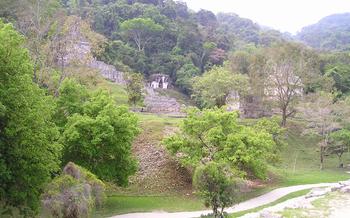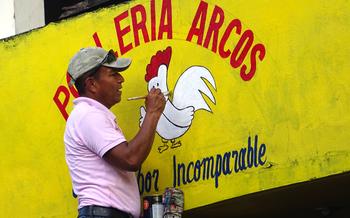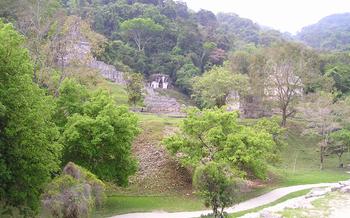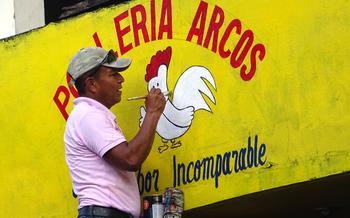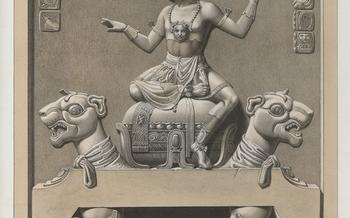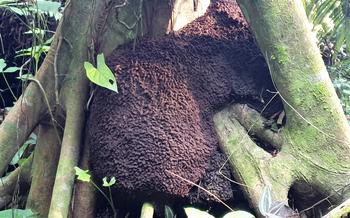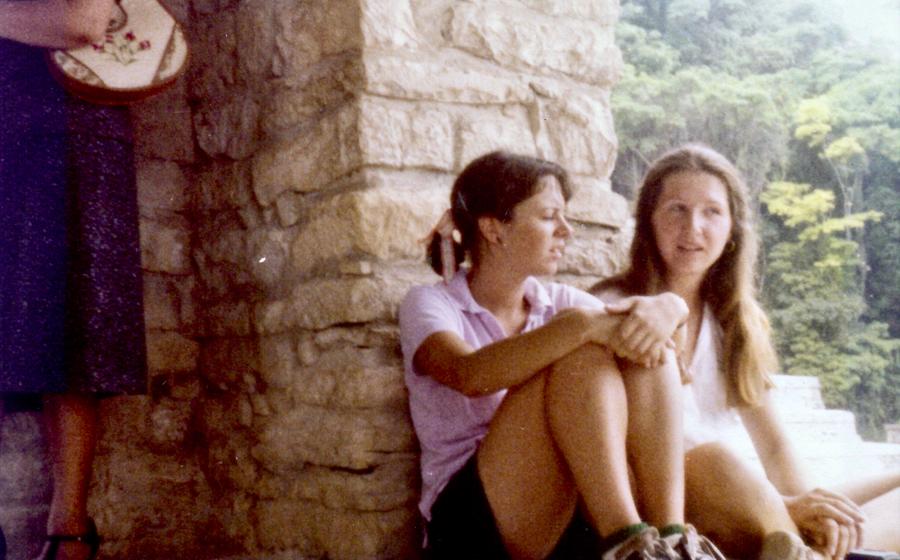
The Palace of Palenque
- Palenque Palace, a Masterpiece of Maya Architecture
- Exploring the Palace's Architectural Highlights
- The Royal Family's Abode
- Unraveling the Mysteries of the Temple of Inscriptions
- The Palace's Role in Maya Rituals and Ceremonies
- Experiencing the Palace's Surroundings
- The Palace's Contribution to Maya Art and Culture
- Restoration and Conservation Efforts
- The Palace in Popular Culture and Media
- Exploring the National Park and Beyond
- Engaging with the Local Community
- Safety Considerations
- Photography and Videography Guidelines:
- Insider Tip:
Palenque Palace, a Masterpiece of Maya Architecture
The Palenque Palace stands as a testament to the architectural prowess of the ancient Maya civilization. Constructed during the 7th century AD, this magnificent structure served as the royal residence and administrative center of the powerful Maya city of Palenque. Its unique architectural style, intricate carvings, and symbolic iconography make it one of the most captivating attractions in the Maya world.
The palace's design showcases the Maya's mastery of construction techniques, utilizing limestone blocks, corbelled arches, and intricate vaulting systems. Its layout features a series of courtyards, galleries, and temples, each adorned with elaborate carvings and stucco reliefs depicting Maya rulers, deities, and mythical creatures. The palace's grandeur is further enhanced by its elevated location, offering breathtaking views of the surrounding jungle canopy.
The palace's importance extends beyond its architectural significance. It served as the seat of power for Palenque's rulers, who governed the city and its vast territories from within its walls. The palace was also a center of religious rituals and ceremonies, with the Temple of the Cross and the Temple of the Foliated Cross serving as sacred spaces for worship and offerings.
The Palenque Palace stands as a symbol of the Maya civilization's cultural and artistic achievements. Its enduring legacy has influenced subsequent Maya architecture and continues to inspire awe and wonder in visitors from around the world.
Exploring the Palace's Architectural Highlights
The Palenque Palace boasts a magnificent layout that reflects its grandeur and functionality as a royal residence and administrative center. Visitors are greeted by a series of courtyards, each with its own unique features and significance. The Palace's internal courtyards are adorned with meticulously crafted galleries, adorned with intricate carvings and stucco reliefs that narrate stories from Maya mythology and history. These galleries provided spaces for ceremonies, meetings, and everyday activities of the royal court.
Among the notable structures within the palace complex are the Tower, the Temple of the Cross, and the Temple of the Foliated Cross. The Tower, a towering edifice, offers breathtaking views of the surrounding jungle canopy and the city beyond. The Temple of the Cross, renowned for its well-preserved stucco reliefs, showcases scenes of Maya rituals and mythology, including the symbolic Tree of Life. The Temple of the Foliated Cross, with its elaborate carvings depicting a Maya ruler surrounded by intricate foliage, stands as a testament to the exceptional artistry of Palenque's craftsmen.
The Palace's walls are adorned with a mesmerizing array of carvings, stucco reliefs, and hieroglyphic inscriptions that provide valuable insights into Maya culture and history. These intricate artworks depict scenes of royal life, religious ceremonies, and mythological narratives. The hieroglyphic inscriptions, deciphered by scholars, have revealed the names and lineages of Maya rulers, as well as historical events and conquests. The symbolism and iconography depicted in the palace's artwork hold profound significance, reflecting the Maya people's spiritual beliefs, their understanding of the cosmos, and their connection to the natural world.
The Royal Family's Abode
The Palenque Palace served as the grand residence of the Maya rulers and their families, embodying the power and prestige of the Maya civilization. One of the most renowned rulers of Palenque was Pacal the Great, who ascended to the throne in 615 AD. Under his reign, the city flourished, and the palace underwent significant expansion and embellishment.
Pacal the Great was a visionary leader who oversaw the construction of many of the palace's most iconic structures, including the Temple of Inscriptions and the Tower. His reign marked a golden age for Palenque, characterized by artistic and intellectual achievements. The palace was not merely a place of residence for the royal family but also a center of administration, where important decisions were made and diplomatic affairs were conducted.
The Maya rulers who inhabited the palace were revered as divine beings, intermediaries between the gods and the people. They played a crucial role in religious ceremonies and rituals, ensuring the well-being and prosperity of their kingdom. The palace's grandeur and opulence reflected the power and authority of the Maya rulers, showcasing the sophistication and cultural achievements of this ancient civilization.
Unraveling the Mysteries of the Temple of Inscriptions
Within the confines of the Palenque Palace, lies a hidden gem that has captivated the imaginations of archaeologists and historians alike - the Temple of Inscriptions. Discovered in 1952 by Mexican archaeologist Alberto Ruz Lhuillier, the temple holds the distinction of being the only known pyramid in the Maya world built specifically as a tomb.
Descending into the temple's depths, Ruz Lhuillier made a groundbreaking discovery - the intact tomb of Pacal the Great, one of Palenque's most renowned rulers. The tomb's elaborate carvings and inscriptions provided invaluable insights into Maya funerary practices and beliefs about the afterlife.
The centerpiece of the tomb is the massive stone sarcophagus, intricately carved with scenes depicting Pacal's journey through the underworld. The lid of the sarcophagus features a reclining figure of Pacal, adorned with elaborate headdresses and jewelry, symbolizing his transformation into a divine being.
The walls of the temple are adorned with a series of hieroglyphic inscriptions, known as the Tablet of the Inscriptions. These inscriptions provide a detailed account of Pacal's life and reign, as well as his genealogy and lineage. They also shed light on the political and cultural history of Palenque during his time.
The discovery of the Temple of Inscriptions and Pacal's tomb has revolutionized our understanding of Maya civilization. It has provided a wealth of information about Maya funerary customs, beliefs about the afterlife, and the significance of royal burials. It stands as a testament to the ingenuity, artistry, and cultural richness of the ancient Maya.
The Palace's Role in Maya Rituals and Ceremonies
The Palenque Palace was not merely a place of residence for Maya royalty; it also served as a sacred space where numerous rituals and ceremonies took place. These ceremonies were deeply intertwined with the Maya worldview, their beliefs about the cosmos, and their relationship with the gods.
One of the most striking features of the palace is its alignment with celestial events. The windows and doorways of the palace were meticulously positioned to allow sunlight to illuminate specific parts of the building during significant astronomical events, such as the solstices and equinoxes. This alignment suggests that the palace was used as an astronomical observatory, enabling the Maya to track the movements of the sun, moon, and stars.
Religious ceremonies were also held within the palace walls. Offerings of food, incense, and other precious objects were made to the gods, and prayers were recited to seek their favor. The palace was believed to be a place where the sacred and the mundane intersected, and where the Maya could communicate with the divine realm.
Perhaps the most significant ritual associated with the palace was the royal burial. The Maya believed that death was a journey to the underworld, and that the deceased ruler would become a powerful ancestor who would continue to watch over and protect the city. The elaborate tomb of Pacal the Great, discovered beneath the Temple of Inscriptions, is a testament to the importance of royal burials in Maya culture. The tomb contained a wealth of jade artifacts, ceramic vessels, and other objects that were believed to accompany the ruler on his journey to the afterlife.
These rituals and ceremonies played a vital role in Maya society, reinforcing the power and authority of the rulers, ensuring the well-being of the city, and connecting the Maya people to the sacred realm. The Palenque Palace stands as a testament to the Maya civilization's rich spiritual and cultural traditions.
Experiencing the Palace's Surroundings
The Palace of Palenque is nestled amidst a breathtaking natural environment that further enhances its allure. Lush jungle vegetation surrounds the palace, creating a serene and mystical ambiance. The harmonious blend of architecture and nature is a testament to the Maya's deep connection to their surroundings.
Within the palace complex, you'll find other notable structures that add to its grandeur. The Temple of the Sun, located to the west of the palace, is an impressive pyramid that offers stunning views of the surrounding jungle. The Temple of the Cross, situated to the east, is known for its well-preserved stucco reliefs depicting a Maya ruler and his entourage.
Venturing beyond the palace complex, you'll discover even more wonders. The Palenque National Park, which encompasses the palace and other archaeological sites, offers a diverse array of flora and fauna. Keep an eye out for endangered species such as howler monkeys, spider monkeys, and toucans that make their home in the park's lush forests.
For a refreshing break, take a dip in the nearby Misol-Ha waterfalls, located just a short drive from the palace. These cascading waterfalls offer a picturesque spot to cool off and immerse yourself in the beauty of nature.
The surrounding region is rich in cultural and historical attractions. Visit the nearby town of Palenque, where you can explore local markets, savor traditional cuisine, and learn about the vibrant indigenous traditions. Engage with the local community and support their sustainable tourism initiatives to preserve the cultural heritage of Palenque.
The Palace's Contribution to Maya Art and Culture
The Palace of Palenque stands as a testament to the extraordinary artistic achievements of the Maya civilization during the Classic period. Its architecture, sculptures, and intricate carvings showcase a unique artistic style that flourished in the city. The palace's artwork is characterized by its realism, naturalism, and attention to detail, capturing the essence of Maya culture and beliefs.
One of the most striking features of Palenque's art is its use of symbolism and iconography. The palace's walls are adorned with intricate carvings and stucco reliefs that depict various Maya deities, mythical creatures, and scenes from royal life. These artworks served as a means of communication, conveying important messages about the Maya worldview, history, and mythology.
The palace's artistic style had a profound influence on other Maya cities and regions, contributing to the development of a shared artistic vocabulary. The naturalistic depictions of human figures and the use of glyphs and hieroglyphs to record historical events became common features in Maya art throughout the region.
Among the notable artworks from the Palace of Palenque is the Tablet of the Foliated Cross, a large stucco relief found in the Temple of the Foliated Cross. The tablet depicts a Maya ruler seated on a throne, surrounded by elaborate foliated motifs and hieroglyphic inscriptions. The artwork showcases the exceptional craftsmanship and artistic skill of the Maya artists and provides valuable insights into Maya iconography and symbolism.
Palenque's artistic legacy continues to inspire and captivate people worldwide, serving as a testament to the creativity and cultural achievements of the Maya civilization.
Restoration and Conservation Efforts
The rediscovery of Palenque in the 18th century sparked interest in preserving and restoring this ancient Maya city. In the 19th century, extensive archaeological excavations were conducted, revealing the grandeur of the Palace of Palenque. However, it wasn't until the 20th century that comprehensive restoration efforts began.
A team of archaeologists, architects, and conservators embarked on a mission to safeguard the palace's intricate carvings, sculptures, and structures. The challenges they faced were immense, as the palace had been exposed to centuries of weathering, vegetation growth, and looting.
Despite these obstacles, the restoration team meticulously cleaned and repaired the palace's facades, walls, and roofs. They employed innovative techniques to stabilize and reinforce the structures, ensuring their longevity. The intricate carvings and stucco reliefs were carefully restored, bringing the palace's artwork back to life.
Ongoing conservation projects are essential to protect the Palace of Palenque for future generations. Organizations such as the National Institute of Anthropology and History (INAH) and the Getty Conservation Institute collaborate to monitor the palace's condition, implement preventive measures, and address any emerging threats.
By preserving the Palace of Palenque, we not only safeguard a priceless piece of Maya history but also celebrate the enduring legacy of this ancient civilization. The restoration efforts pay homage to the artistry and ingenuity of the Maya people, ensuring that their architectural masterpiece continues to inspire and captivate visitors for centuries to come.
The Palace in Popular Culture and Media
The Palenque Palace has gained significant recognition beyond archaeological and historical circles, captivating the imaginations of filmmakers, documentarians, and artists worldwide. Its striking architecture, intricate carvings, and historical significance have made it a popular subject in various forms of media.
The palace has graced the silver screen, appearing in several films that showcase its grandeur and mystique. Notable examples include "Apocalypto," directed by Mel Gibson, which features the palace as a backdrop for a thrilling tale set in the Mayan world. Additionally, the palace has been featured in documentaries that explore the mysteries and wonders of ancient Maya civilization, such as the BBC's "The Mayan World."
The palace's influence extends to television as well. It has been featured in popular TV shows like "Ancient Aliens," which delves into the theories surrounding the palace's construction and its possible connections to extraterrestrial beings. These media representations have played a significant role in introducing the palace to a global audience, sparking interest in its history and cultural significance.
Beyond film and television, the palace has also inspired artists in other mediums. Its unique iconography and symbolism have found their way into contemporary art, literature, and music. For instance, the palace's intricate carvings have served as inspiration for paintings, sculptures, and even fashion designs. Writers have incorporated the palace's history and legends into their works, creating captivating stories that transport readers to the ancient Maya world.
The palace's enduring appeal lies in its ability to ignite curiosity and imagination. Its presence in popular culture reflects its status as a symbol of Mexico's rich cultural heritage and its universal appeal to audiences worldwide.
Exploring the National Park and Beyond
The Palenque National Park is an enchanting natural haven that encloses the Palenque Palace and a plethora of other captivating archaeological sites. This park is a living testament to the harmonious coexistence of history, culture, and biodiversity. Its lush landscapes are adorned with an orchestra of cascading waterfalls, diverse ecosystems, and an astonishing array of flora and fauna.
As you embark on a journey through the park's intricate network of trails, keep your eyes peeled for endangered species like the resplendent quetzal, a vibrant bird known for its long, flowing tail feathers. The park's verdant tapestry is also home to tapirs, spider monkeys, and a kaleidoscope of butterflies that flutter through the air like confetti.
Don't miss the opportunity to immerse yourself in the park's exhilarating outdoor activities. Lace up your hiking boots and conquer the challenging trails that wind through the jungle, leading you to hidden gems and breathtaking viewpoints. For a refreshing respite, take a dip in the crystal-clear waters of the Agua Azul waterfalls, where the turquoise cascades tumble into a series of tranquil pools. And if you seek an adrenaline rush, rappel down the Misol-Ha waterfalls, a towering natural wonder that plunges into a mesmerizing plunge pool.
Venturing beyond the park's boundaries, you'll discover even more treasures. The nearby Agua Azul waterfalls and Misol-Ha waterfalls are must-sees, offering a symphony of cascading waters and picturesque vistas. Immerse yourself in the local culture by visiting nearby villages, where you can witness traditional Mayan rituals, savor authentic cuisine, and learn about the rich heritage of the region. The Palenque National Park and its surroundings offer an unparalleled adventure that blends history, nature, and culture into an unforgettable experience.
Engaging with the Local Community
Palenque is a vibrant community with a rich cultural heritage. While exploring the ancient city's ruins, it is crucial to remember the importance of respecting and supporting the local people who call this place home. Embrace opportunities for cultural exchange by visiting local markets, sampling traditional cuisine, and learning about indigenous traditions. Engage with the locals in a respectful and ethical manner, fostering meaningful connections and contributing to the preservation of their way of life.
Look for community-led initiatives that promote sustainable tourism and preserve cultural heritage. These initiatives not only provide unique experiences for visitors but also empower local communities and ensure the long-term sustainability of the region. By supporting these initiatives, you contribute to the well-being of the local people and help preserve the cultural heritage that makes Palenque so special.
Safety Considerations
When traveling to Palenque, it is essential to prioritize your safety and well-being. Here are some general tips to ensure a safe and enjoyable trip:
-
Be aware of your surroundings: Pay attention to your surroundings and avoid walking alone in secluded areas, especially at night.
-
Protect your belongings: Keep your valuables close to you and avoid carrying large amounts of cash. Use a money belt or a hidden pocket to store important documents and money.
-
Choose reliable transportation: Opt for reputable tour operators and transportation companies. Ask your hotel or hostel for recommendations and avoid unlicensed taxis or buses.
-
Be wary of scams: Be cautious of individuals offering unsolicited services or goods. Do not share personal information with strangers, and be aware of common scams such as fake tour guides or overpriced souvenirs.
-
Learn basic Spanish phrases: Knowing a few basic Spanish phrases can be helpful in communicating with locals and asking for assistance if needed.
-
Emergency contact information: Keep emergency contact information, such as the local police station and your embassy, handy. Save important phone numbers in your phone and make copies of your travel documents.
Remember, by being vigilant and taking necessary precautions, you can minimize risks and fully enjoy your visit to Palenque.
Photography and Videography Guidelines:
Capturing the splendor of Palenque Palace through photography and videography is an enriching experience. However, certain guidelines must be followed to ensure respectful and responsible documentation.
- Rules and Regulations:
-
Flash photography and the use of tripods are strictly prohibited inside the palace complex to preserve the delicate carvings and structures.
-
Tips for Stunning Shots:
- Utilize natural light to capture the intricate details of the palace's architecture and sculptures.
- Experiment with different angles and perspectives to showcase the palace's grandeur and its surrounding environment.
-
Consider using a wide-angle lens to capture the vastness of the courtyards and galleries.
-
Ethical Considerations:
- Be mindful of other visitors and avoid obstructing their views or disturbing their experience.
- Refrain from climbing or touching any structures to prevent damage to the ancient ruins.
-
Respect the privacy of local people and seek permission before photographing them.
-
Sharing Responsibly:
- Share your photos and videos responsibly on social media, ensuring proper attribution and respecting copyright laws.
- Consider using hashtags related to Palenque and the palace to connect with other enthusiasts and promote cultural preservation.
Insider Tip:
Venture beyond the main courtyards of the palace to discover hidden corners and lesser-known spots that offer a unique perspective on Palenque's grandeur. One such gem is the Temple of the Count, situated on the eastern side of the palace complex. This smaller yet equally impressive structure features intricate carvings and stucco reliefs depicting scenes from Maya mythology. Take your time to explore the temple's interior and admire the well-preserved murals that adorn its walls.
For a moment of tranquility amidst the buzz of visitors, seek out the serene ambiance of the botanical garden located just outside the palace grounds. This hidden oasis showcases a diverse collection of native plants and flowers, providing a peaceful retreat where you can relax and soak in the natural beauty of Palenque.
When it comes to dining, venture into the heart of Palenque town to savor the authentic flavors of traditional Mexican cuisine. Try the local specialty, "pejelagarto," a delicious fish dish prepared with a unique blend of spices and herbs. For a memorable dining experience, head to "El Mirador," a rooftop restaurant with breathtaking views of the palace and the surrounding jungle.
